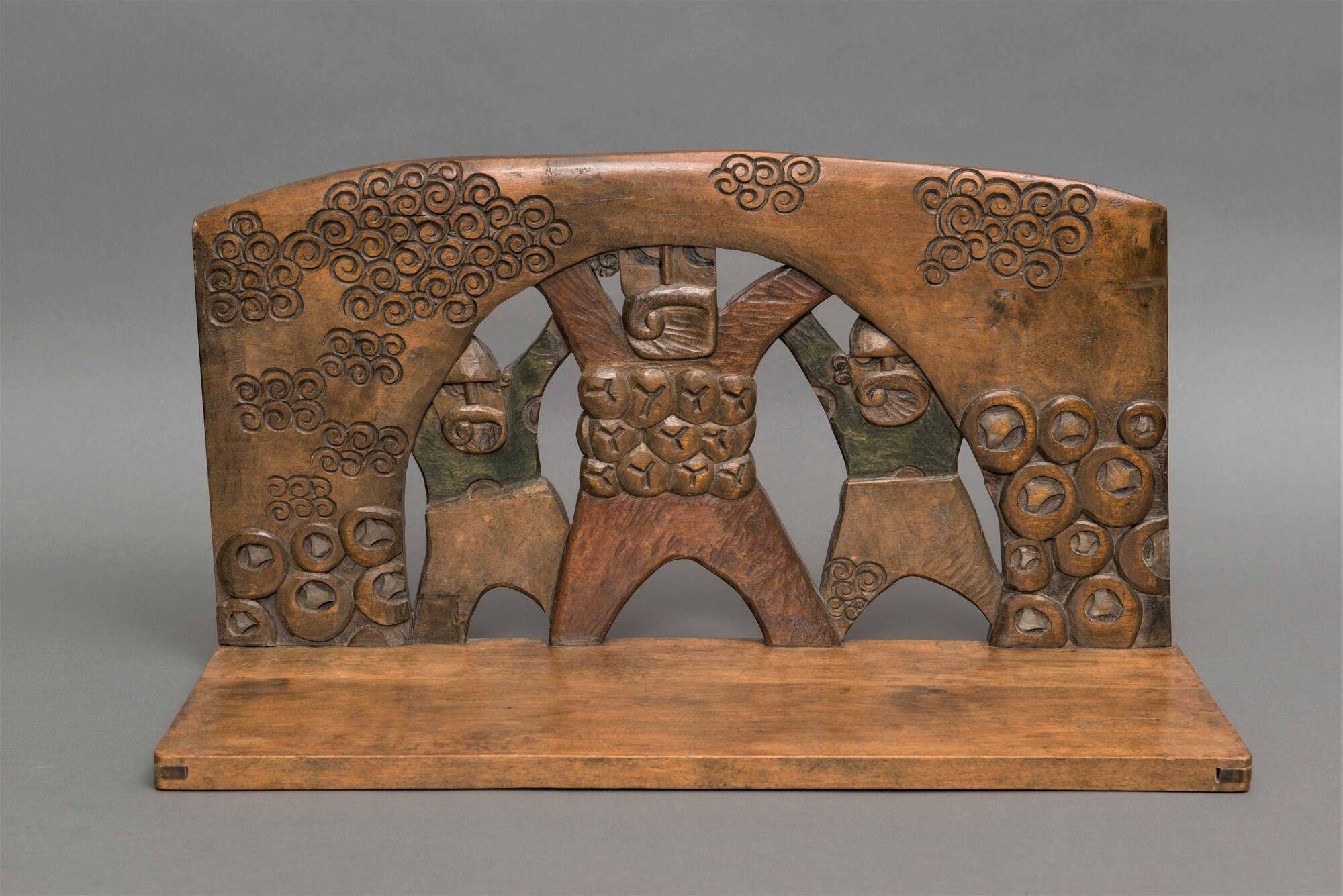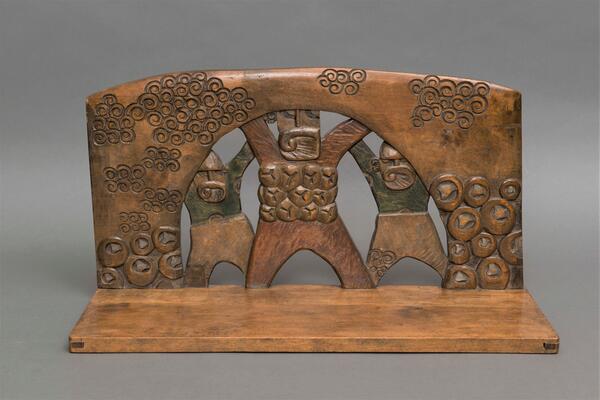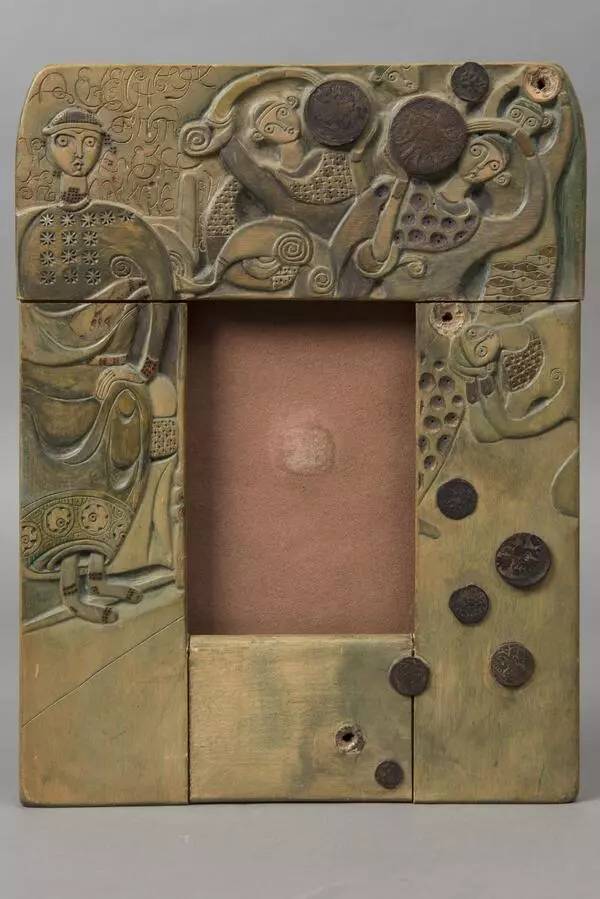After artist’s Sergei Malyutin departure from the Talashkino estate in 1903, a young artist Aleksey Zinoviev, a graduate of the Moscow Stroganov School, was invited to head the local workshops. On the right side, on the wall, you can see several carved wooden shelves, made according to his design.
Zinoviev was a talented draftsman, was fascinated by Russian folk art, loved the theater, many innovations appeared in the Talashkino workshops due to him. Furniture, household utensils, and baked clay products were made under his leadership. Zinoviev also took an active part in the life of the Talashkino theater, created the scenery for productions, including the most famous performance — the opera “The Tale of the Dead Princess and Seven Knights”, staged in the estate in 1904.
At first, when creating carvings, the artist strove to imitate Sergei Malyutin’s samples both in the chosen subjects and in the nature of the carving. But gradually he developed an independent style and new artistic techniques.
The artist was greatly influenced by the work of Nicholas Roerich, from whom Alexei Zinoviev partially adopted the character of the drawing. Thanks to the new head of the workshop, the theme of carvings expanded: fairy-tale and mythological plots, images of fantastic animals made in an emphatically primitive manner, abstract symbols appeared.
The artist strove for a variety of technical and compositional solutions. The pieces of furniture made according to Zinoviev’s projects, in contrast to the “Malyutin” ones, are more functional, they differ in more laconic forms and decor. Zinoviev tried to work more with the natural texture of wood.
The exhibition features several small carved shelves made according to Zinoviev’s sketches. By the end of the 19th century, it became fashionable to saturate the interior with various decorative details. Small carvings in the Russian style, including shelves, photo frames, boxes, and ladles, have gained popularity, largely due to their availability. Small shelves could be used both as an independent decorative element and as a stand for dishes and other household utensils.
Zinoviev was a talented draftsman, was fascinated by Russian folk art, loved the theater, many innovations appeared in the Talashkino workshops due to him. Furniture, household utensils, and baked clay products were made under his leadership. Zinoviev also took an active part in the life of the Talashkino theater, created the scenery for productions, including the most famous performance — the opera “The Tale of the Dead Princess and Seven Knights”, staged in the estate in 1904.
At first, when creating carvings, the artist strove to imitate Sergei Malyutin’s samples both in the chosen subjects and in the nature of the carving. But gradually he developed an independent style and new artistic techniques.
The artist was greatly influenced by the work of Nicholas Roerich, from whom Alexei Zinoviev partially adopted the character of the drawing. Thanks to the new head of the workshop, the theme of carvings expanded: fairy-tale and mythological plots, images of fantastic animals made in an emphatically primitive manner, abstract symbols appeared.
The artist strove for a variety of technical and compositional solutions. The pieces of furniture made according to Zinoviev’s projects, in contrast to the “Malyutin” ones, are more functional, they differ in more laconic forms and decor. Zinoviev tried to work more with the natural texture of wood.
The exhibition features several small carved shelves made according to Zinoviev’s sketches. By the end of the 19th century, it became fashionable to saturate the interior with various decorative details. Small carvings in the Russian style, including shelves, photo frames, boxes, and ladles, have gained popularity, largely due to their availability. Small shelves could be used both as an independent decorative element and as a stand for dishes and other household utensils.





